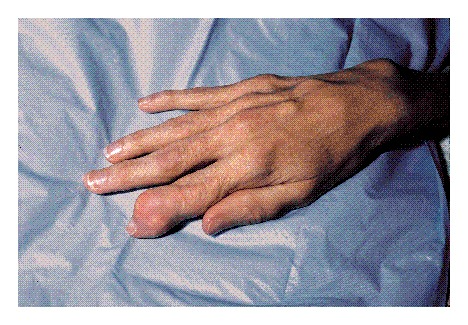Gouty arthritis in patient with anorexia nervosa
This article highlights the case of deforming gouty arthritis, known as tophaceous gout in a 39-year-old female patient. She was diagnosed with anorexia nervosa at the age of 15. And she began experiencing attacks of acute arthritis at the age of 23. Investigations revealed the presence of crystals of monosodium urate monohydrate in the joints during the attacks. The multiple cutaneous nodules seen in the clinical image, on the distal aspect of the index finger are tophaceous deposits of monosodium urate crystals. According to the patient’s history, the first tophi appeared at the age of 24.
Tophaceous gout is defined as a severe form of gout that is commonly seen in people with chronic gout
Whereas gout is an inflammatory arthritis that is known to affect 2 in every 100 people in the United States. Arthritis causes joint pain or disease. People with chronic gout often develop topacheous gout, affecting the joints and soft tissues in the body. It further leads to a reduced range of motion and in some cases may even cause disability. Although, there are treatments available for reducing the symptoms and minimising flare.
Gout is differentiated into four stages, with tophaceous gout being the most severe. It is often only seen in people who have chronic untreated gout. However, it can also affect people who have undergone a heart transplant. Tophaceous gout occurs when crystals of uric acid form masses of white growths . These growths develop around the joints and tissues that are affected by gout. The masses are referred to as tophi. They are visible under the skin and look like swollen nodules. The material is either in a liquid, pasty or chalky state.
The condition is diagnosed by taking a small sample from a suspected tophi and it is checked for uric acid crystals. About 12 to 13% of people with gout tend to develop tophi.
Source: NEJM




